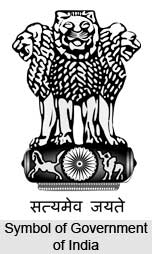 The Commission for Scientific and Technical Terminology was set up on 1st October, 1961 by a resolution of the Government of India, Ministry of Education. The resolution of the Government was as per the recommendations of a Committee constituted under the provisions of clause (4) of Article 344 of the Constitution of India. According to this resolution of 1960, the following responsibilities were to be undertaken by the Commission- review of the work done so far in the field of scientific and technical terminology in the light of the principles laid down in paragraph 3 of the Presidential Order; formulation of principles relating to evolution and coordination of scientific and technical terminology in Hindi and other languages; co-ordination of the work done by different agencies in the States in the field of scientific and technical terminology, with the consent or at the instance of the State governments concerned, and approval of glossaries for use in Hindi and other Indian languages as may be submitted to it by the concerned agencies. The Commission may also take up preparation of standard scientific textbooks using the new terminology evolved or approved by it, preparation of scientific and technical dictionaries and translation into Indian languages of scientific books in foreign languages.
The Commission for Scientific and Technical Terminology was set up on 1st October, 1961 by a resolution of the Government of India, Ministry of Education. The resolution of the Government was as per the recommendations of a Committee constituted under the provisions of clause (4) of Article 344 of the Constitution of India. According to this resolution of 1960, the following responsibilities were to be undertaken by the Commission- review of the work done so far in the field of scientific and technical terminology in the light of the principles laid down in paragraph 3 of the Presidential Order; formulation of principles relating to evolution and coordination of scientific and technical terminology in Hindi and other languages; co-ordination of the work done by different agencies in the States in the field of scientific and technical terminology, with the consent or at the instance of the State governments concerned, and approval of glossaries for use in Hindi and other Indian languages as may be submitted to it by the concerned agencies. The Commission may also take up preparation of standard scientific textbooks using the new terminology evolved or approved by it, preparation of scientific and technical dictionaries and translation into Indian languages of scientific books in foreign languages.
Functions of Commission for Scientific and Technical Terminology
Following the recommendations of the Commission and the Presidential Orders issued thereafter, the functions and duties of the Commission for Scientific and Technical Terminology, at present can be outlined as follows.
To evolve and define scientific and technical terms in Hindi and all Indian languages and publish glossaries, definitional dictionaries and encyclopaedia;
To see that the evolved terms and their definitions reach the students, teachers, scholars, scientists, officers etc;
To ensure proper usage/ necessary updation/ correction/ improvement on the work done (through workshops/ seminars/ orientation programmes) by obtaining useful feedback;
To coordinate with all states to ensure uniformity of terminology in Hindi and other Indian languages. (Through State Governments/ Granth Academies/ University Cells/ Glossary Clubs or other agencies);
To publish/encourage publication of books in Hindi and Indian languages for popularization and usage of standard terminology.
This article is a stub. You can enrich by adding more information to it. Send your Write Up to content@indianetzone.com




















